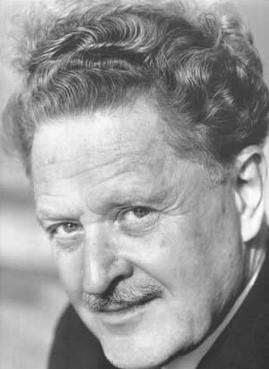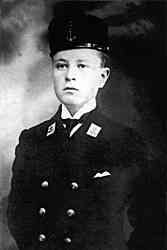Nâzım Hikmet facts for kids
Quick facts for kids
Nâzım Hikmet Ran
|
|
|---|---|
 |
|
| Born | Nâzım Hikmet 15 January 1902 Salonica, Ottoman Empire (today Thessaloniki, Greece) |
| Died | 3 June 1963 (aged 61) Moscow, Soviet Union |
| Pen name | Orhan Selim, Ahmet Oğuz, Mümtaz Osman, Ercüment Er |
| Occupation | Poet, playwright, memoirist, novelist, screenwriter, film director |
| Language | Turkish |
| Citizenship | Turkey, Poland |
| Signature | |
 |
|
Nâzım Hikmet Ran (born January 15, 1902 – died June 3, 1963), often known as Nâzım Hikmet, was a famous Turkish poet, writer, and director. People loved his poems for their beautiful flow. He was called a "romantic communist" because of his political beliefs. He spent a lot of his life in prison or living away from his home country. His poems have been translated into more than 50 languages around the world.
Contents
Nâzım Hikmet's Family Background
Nâzım Hikmet had a very interesting family history! He said his family came from many different places. His father's side was Turkish. His mother's family was a mix of German, Polish, Georgian, and Circassian people. They were a well-known family with important connections.
His grandfather on his mother's side, Hasan Enver Pasha, was the son of Mustafa Celalettin Pasha. Mustafa was born in Poland. Nâzım Hikmet's grandmother, Leyla Hanım, was the daughter of Mehmet Ali Pasha, who had French and German roots. This shows how diverse his family was!
Early Life and Education
Nâzım Hikmet was born on January 15, 1902, in a city called Selânik (now Thessaloniki, Greece). His father worked for the Ottoman government there. Nâzım went to several schools in Istanbul, including the famous Galatasaray High School, where he started learning French.
In 1918, he finished the Ottoman Naval School. This was a time of big changes, as the Ottoman Empire was fighting in World War I. He briefly worked as a naval officer, but he got very sick in 1919 and had to leave the navy.
Joining the Turkish War of Independence
In 1921, Nâzım and his friends went to Anatolia to join the Turkish War of Independence. This was a fight for Turkey's freedom. They met Mustafa Kemal Atatürk, who asked them to write a poem to inspire volunteers. The poem was very popular!
Instead of sending them to the front lines, they became teachers in Bolu. However, their communist ideas were not popular there. So, they decided to go to Batumi, Georgia, to see what the Russian Revolution was like.
Studying in Moscow
In 1922, Nâzım Hikmet moved to Moscow. He studied Economics and Sociology at the Communist University of the Toilers of the East. While there, he was inspired by famous artists like Vladimir Mayakovsky and Vsevolod Meyerhold, and by the ideas of Vladimir Lenin.
Nâzım Hikmet's Poetic Style
Nâzım Hikmet started writing poems using a traditional Turkish style called syllabic meter. But as he grew as a poet, he felt this style was too limiting. He wanted to try new ways of writing.
Developing Free Verse
In Moscow in 1922, he started writing in free verse. This means his poems didn't have a strict rhythm or rhyme scheme. This new style fit the Turkish language very well. He became a leader in the Turkish avant-garde movement, creating many new and exciting poems, plays, and film scripts.
People have compared Nâzım Hikmet to other great poets like Pablo Neruda and Federico García Lorca. His unique style mixed strong ideas with beautiful, lyrical language.
Music and Translations
Many of his poems have been turned into songs by Turkish composers like Zülfü Livaneli and Cem Karaca. Some of his works were also translated into Greek and set to music by Greek composers.
Because of his political views, his books were banned in Turkey from 1938 to 1965.
Later Life and Legacy
Nâzım Hikmet's time in prison in the 1940s became a big deal around the world. Famous people like Pablo Picasso, Paul Robeson, and Jean-Paul Sartre campaigned for him to be released.
Hunger Strike and Release
On April 8, 1950, Nâzım Hikmet started a hunger strike. He was protesting because the Turkish government didn't pass a law that would free prisoners like him. He was very sick, but he kept striking.
His hunger strike caused a lot of attention in Turkey. People signed petitions, and a magazine named after him was published. His mother and other famous Turkish poets also started hunger strikes to support him. Finally, on May 19, 1950, he was released from prison because of a new amnesty law.
International Recognition and Exile
In November 1950, Nâzım Hikmet received the International Peace Prize from the World Council of Peace, along with other important figures like Pablo Picasso.
Later, Nâzım Hikmet had to leave Turkey. He escaped to Romania and then moved to the Soviet Union. His books were published in Bulgaria, where there was a Turkish minority. The communist government there used his fame to criticize Turkey.
He also had strong opinions about the conflict in Cyprus. He believed that Turkish and Greek Cypriots could live together peacefully.
Death and Burial
Nâzım Hikmet was chased by the Turkish government for many years because of his communist views. He died of a heart attack in Moscow on June 3, 1963. He was far from his home country, which he loved very much.
He is buried in Moscow's famous Novodevichy Cemetery. Many people from Turkey and around the world visit his tombstone. His last wish was to be buried under a plane tree in a village cemetery in Anatolia, but this never happened.
Lasting Impact
Even though he was treated badly by the Turkish government, Nâzım Hikmet is still highly respected by the Turkish people. His poems describe the people and places of his homeland, like Human Landscapes from my Country. He also wrote about the Turkish War of Independence in works like The Epic of the War of Independence. These are considered some of Turkey's greatest patriotic literary works.
After he died, his collected works were published in Turkish in Bulgaria. His Turkish citizenship was taken away in 1959 but was given back in 2009.
Nâzım Hikmet's Support for Artists
While Nâzım Hikmet was in Bursa Prison in the 1940s, he met a young prisoner named İbrahim Balaban. Nâzım saw that Balaban had a talent for drawing. He gave Balaban his own paints and brushes and encouraged him to keep painting.
Nâzım Hikmet helped Balaban, who had only a few years of schooling, to develop his own ideas about philosophy, society, money, and politics. Nâzım admired Balaban greatly and called him "his peasant painter." They stayed in touch even after they were both released from prison.
Selected Works of Nâzım Hikmet
The Girl Child Poem
Nâzım Hikmet's poem Kız Çocuğu (which means The Girl Child) is a powerful message for peace. It tells the story of a seven-year-old girl who died in the atomic bomb attack on Hiroshima. This poem has become very popular as an anti-war song and has been performed by many singers around the world. In English, it's also known as I Come and Stand at Every Door or Hiroshima Girl.
- Turkish Versions: Zülfü Livaneli sang a version of the original Turkish poem, which Joan Baez later also sang. Fazıl Say included the poem in his Nazım oratorio.
- English Versions: The American folk singer Pete Seeger used an English translation of the poem for his song I Come And Stand At Every Door. The American rock band The Byrds also recorded this song on their album Fifth Dimension in 1966. Other artists like Harvey Andrews and The Fall have also covered it.
- Japanese Version: In 2005, Japanese singer Chitose Hajime worked with Ryuichi Sakamoto to translate Kız Çocuğu into Japanese. They performed it at the Hiroshima Peace Memorial on the 60th anniversary of the atomic bombing.
On the Soldier Worth 23 Cents
Nâzım Hikmet also spoke out against the Korean War, in which Turkey took part. After a speech by John Foster Dulles, the U.S. Secretary of State, who compared the cost of Turkish soldiers to American soldiers, Nâzım Hikmet wrote a protest poem. This poem, called "23 Sentlik Askere Dair" (On the soldier worth 23 cents), criticized the policies of the United States.
Images for kids
See also
 In Spanish: Nâzım Hikmet para niños
In Spanish: Nâzım Hikmet para niños





